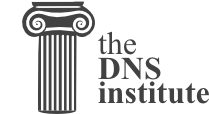
Enabling DNSSEC validation on a recursive server makes it a validating resolver. The job of a validating resolver is to fetch additional information that can be used to computationally verify the answer set. Below are the areas that should be considered for possible hardware enhancement for a validating resolver:
One of the factors to consider is the destinations of your current DNS
traffic. If your current users spend a lot of time visiting .gov
web sites, then you should expect a bigger jump in all of the above
categories when validation is enabled, because .gov is more than
80% signed. This means, more than 80% of the time, your validating resolver
will be doing what is described in the section called “How Does DNSSEC Change DNS Lookup?”. However, if your users only
care about resources in the .com domain, which as of this
writing, is 0.5% signed, then your recursive name server is
unlikely to experience significant load increase after enabling DNSSEC
validation.
On the authoritative server side, DNSSEC is enabled on a zone-by-zone basis. When a zone is DNSSEC-enabled, it is also known as "signed". Below are the areas that you should consider for possible hardware enhancements for an authoritative server with signed zones:
One of the factors to consider, but you really have no control over, is how many users who query your domain name have DNSSEC enabled. It was estimated in late 2014, that roughly 10% to 15% of the Internet DNS queries were DNSSEC aware, and since then Google DNS has become DNSSEC enabled and is used by a further 15% of global DNS users. This translates to roughly 25% to 30% of the DNS queries for your domain will take advantage the additional security features, which result in the increased system load and possibly network traffic.